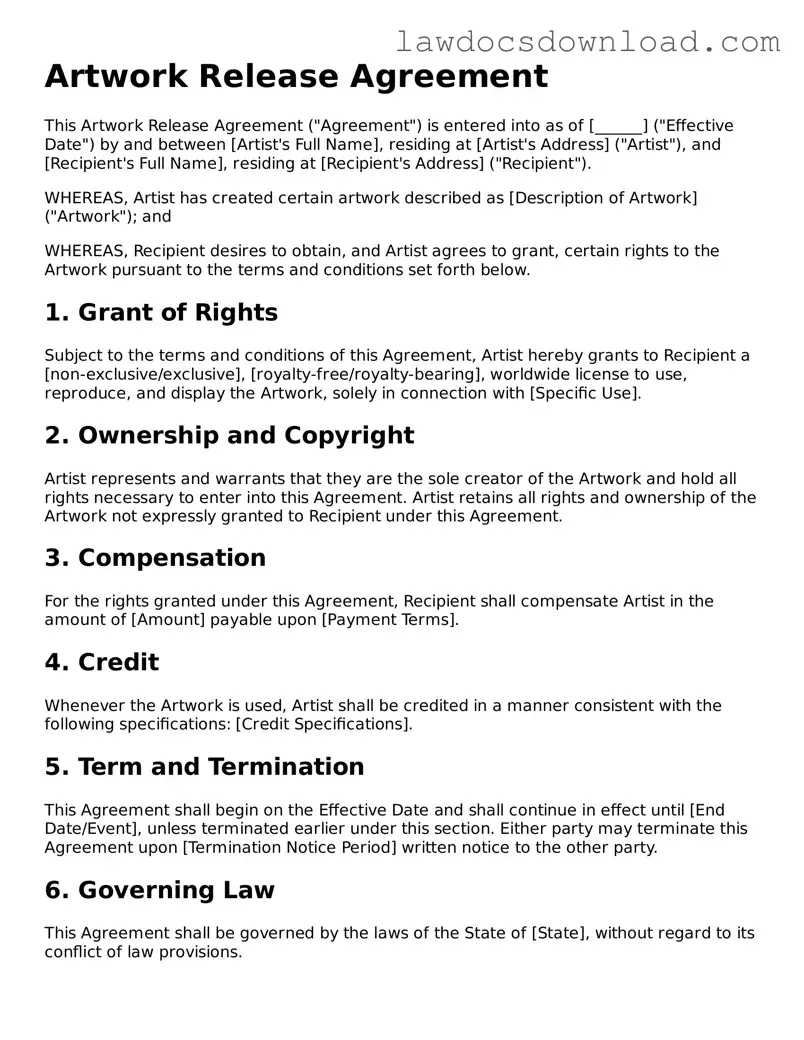Artwork Release Agreement
This Artwork Release Agreement ("Agreement") is entered into as of [______] ("Effective Date") by and between [Artist's Full Name], residing at [Artist's Address] ("Artist"), and [Recipient's Full Name], residing at [Recipient's Address] ("Recipient").
WHEREAS, Artist has created certain artwork described as [Description of Artwork] ("Artwork"); and
WHEREAS, Recipient desires to obtain, and Artist agrees to grant, certain rights to the Artwork pursuant to the terms and conditions set forth below.
1. Grant of Rights
Subject to the terms and conditions of this Agreement, Artist hereby grants to Recipient a [non-exclusive/exclusive], [royalty-free/royalty-bearing], worldwide license to use, reproduce, and display the Artwork, solely in connection with [Specific Use].
2. Ownership and Copyright
Artist represents and warrants that they are the sole creator of the Artwork and hold all rights necessary to enter into this Agreement. Artist retains all rights and ownership of the Artwork not expressly granted to Recipient under this Agreement.
3. Compensation
For the rights granted under this Agreement, Recipient shall compensate Artist in the amount of [Amount] payable upon [Payment Terms].
4. Credit
Whenever the Artwork is used, Artist shall be credited in a manner consistent with the following specifications: [Credit Specifications].
5. Term and Termination
This Agreement shall begin on the Effective Date and shall continue in effect until [End Date/Event], unless terminated earlier under this section. Either party may terminate this Agreement upon [Termination Notice Period] written notice to the other party.
6. Governing Law
This Agreement shall be governed by the laws of the State of [State], without regard to its conflict of law provisions.
7. Entire Agreement
This Agreement constitutes the entire agreement between the parties regarding its subject matter, superseding any prior agreements or negotiations. Any amendments to this Agreement must be in writing and signed by both parties.
8. Acknowledgment
BY SIGNING BELOW, each party acknowledges that they have read and understand this Agreement and agree to be bound by its terms and conditions.
Artist's Signature: __________________________________ Date: [______]
Recipient's Signature: _______________________________ Date: [______]
NOTE: This template is provided as a general reference and should be tailored to the specific legal requirements of your jurisdiction. Consultation with a legal professional is recommended to ensure compliance with local laws and regulations.
